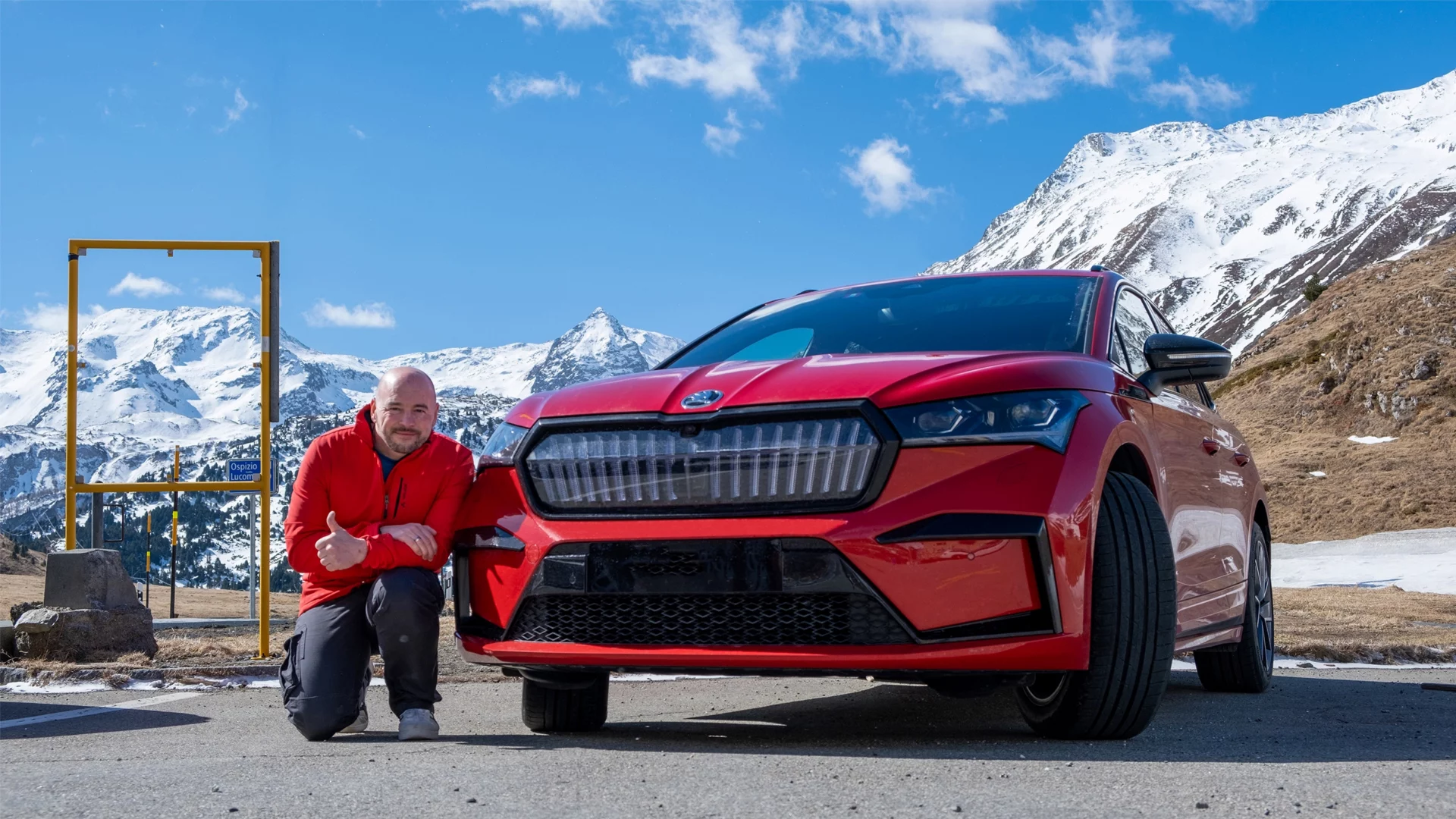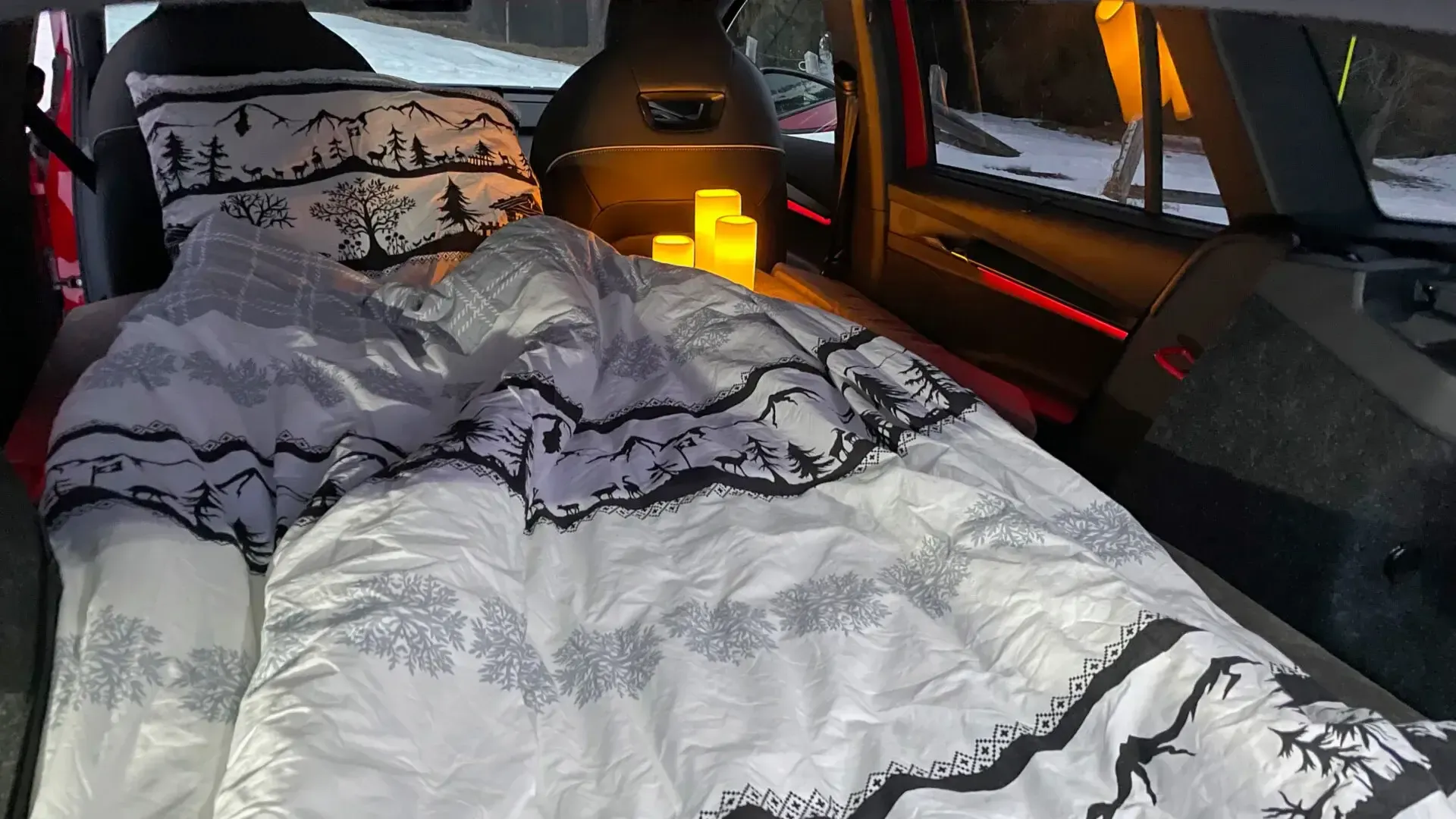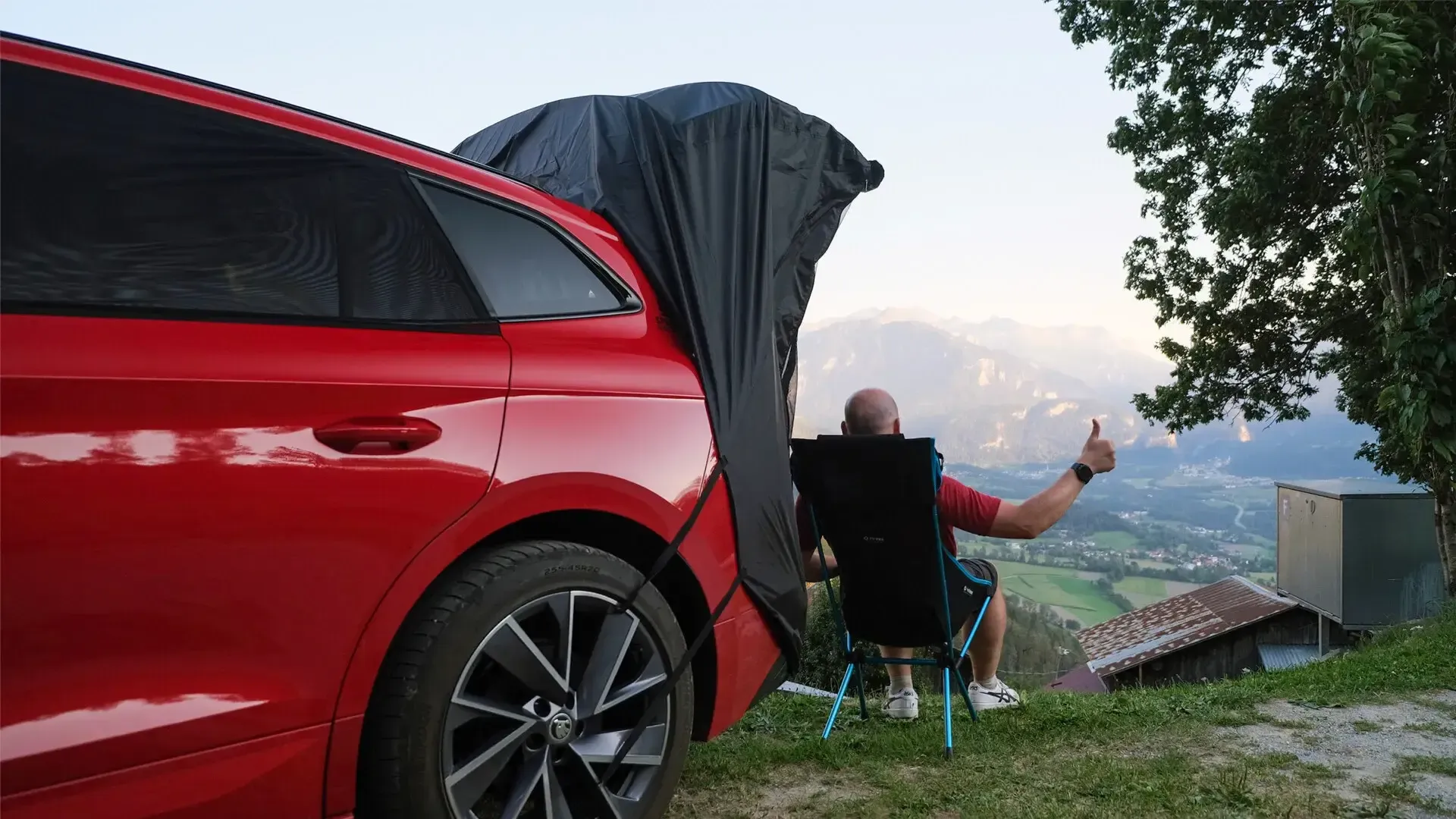
If it was a diesel car, it would have an 8-litre fuel tank. That’s one of the many interesting observations a video star of the Enyaq iV community has to offer.
The 43-year-old German has lived in Switzerland for the past 12 years, since last year his home’s been the town of Mels near Chur where he lives in a flat with his wife. Matthias Speicher works as a digital expert for a local bank. Living in the Alps, his and his wife’s biggest hobbies are mountaineering and hiking. Another way to spend his free time is his YouTube channel on Škoda Enyaq iV. And a dog is soon to become another member of the family – so a new and exciting pastime is close!
When he plunged into the world of Enyaq iV, Matthias wasn’t new to the electric mobility world. He’d driven a number of e-cars including the Volkswagen ID.4 before. In 2015, he met his first Škoda – a company Superb. When Matthias was deciding about going all-electric in 2021, he was choosing from eight models that were available then. We know which won: “The most important feature for me was the trunk space which is really large in the Enyaq iV, most of the other cars had some 150 litres less. I fell in love with the interior because it feels like home. Also the car was, back then, deliverable rather quickly with a waiting time of about six months. And then there are some gimmicks like the head-up display. All in all, it was a good package to go all-electric with one’s own car,” he recalls.
The Enyaq iV is the couple’s main and everyday car. They use it to commute, run errands and drive through Switzerland going on hiking and mountain trips. The car did some 27,000 kilometres during the first year. Matthias even shares a tip for the software developers at Škoda: “I did many overnight trips when I slept in the Enyaq iV. It has enough space when the backseats are folded and it makes for a comfortable bed. The only thing I miss is a camp mode that would keep the car running (heating, music, lights). Today, the car shuts down after 30 minutes.”

Having installed wall-boxes in the garage of the house for all flat owners, Matthias avails of charging the car all the time it’s parked. Since he drives a lot on motorways, his Enyaq’s range isn’t as high as others might be achieving. “In summer it’s typically 430–460 kilometres with a 100-per-cent charge. But in the harsh alpine winters it really drops to about 320 kilometres even though the car has the heating pump. With a typical charge to 80 per cent, I rarely see a 3 as the first digit on the range gauge,” he smiles and adds that he typically needs two “complete” charges from 10 to 80 per cent to get through a week (charging around 100–120 kWh per week). “I split these complete charges into smaller portions – I always plug my car in every day because I can charge at home. It has become a routine to plug it in right after parking.”
Unveiling one of his “how to” tips, Matthias says that 90 per cent of his Enyaq’s charging is done with the slow AC charger at home. The remaining time is fast charging on longer trips. “Charging at home is the best thing that can happen to you. You always have a charged car and don’t need to go to the petrol station anymore. That’s really convenient. When charging on the go, the Enyaq iV performs well – if you know how to do it. You need to plug it in with a really low SoC, best below 10 per cent. This way, you get the power high and charging time low. As with all EVs, you shouldn’t charge to more than 80 per cent because this last bit from 80 to 100 takes too long. Better go on and make one more charging stop. It’ll be faster in the end. My Enyaq doesn’t have the new software yet so I don’t have Plug&Charge which would be a great addition – I look forward to the update.”
Not being worried about little remaining energy in the battery is key according to Matthias. He says he’s never got stuck on the way with zero power left. “Most beginners tend to be concerned about the SoC and go to the charger way too early. But once you get used to going below 10 per cent, it doesn’t scare you. Route planning is key here so you always know you reach a charger. If it really gets close to an empty battery, I sometimes lower the speed on the motorway to extend the range to reach home and charge there. But on long trips I’ve never had a problem with an empty battery or with not finding a charger.”
The chance to charge at home or at least at work is a crucial factor of a happy life with an EV, Matthias admits. “I can’t imagine going to the fast charger to charge my car in everyday life. That would be a real loss of quality to me.”
On the other hand, the low consumption of energy compared to combustion-engine cars is one of the biggest advantages. “I mean, think about it. The Enyaq iV 80 has a 77-kWh energy storage. If you calculate that in a diesel equivalent (9.8 kWh per 1 litre), it means the Enyaq iV has roughly an 8-litre diesel tank. And it drives up to 500 kilometres with it – even though it’s much heavier than a comparable diesel car. Recuperation of energy when braking helps a lot, too. In conventional cars, the braking energy is totally lost in heat. EVs turn it back into energy – around 65 per cent is turned back into forward motion again,” Matthias calculates and says his Enyaq’s brakes still look like new after 30,000 kilometres thanks to recuperation.
When asked about tips from his experience, Matthias recommends his videos – and throws some advice in for good measure: “If you’re still hesitant about EVs, here’s what I say: try it for a weekend, don’t just test it for an hour. And try the EV-specific features of the car, not only the classic stuff like the suspension. And when it comes to charging, only charge as much as you need to reach your next intermediate stopover. Then you may only charge up to 50 or 60 per cent. This is especially helpful if the charging station is slower than what your car allows.”

When you spend so much time with your car as Matthias does, you discover many hidden things about it, including some rather funny details. Matthias says he’s had a lot of fun with Laura the voice assistant. “She knows a lot of funny phrases and commands you wouldn’t normally think of. I don’t know if this works in other languages, but in German it does. You can ask Laura to tell a joke or where she would like to go. You can turn on the seat heating with my butt is cold and there’s really so much more!”